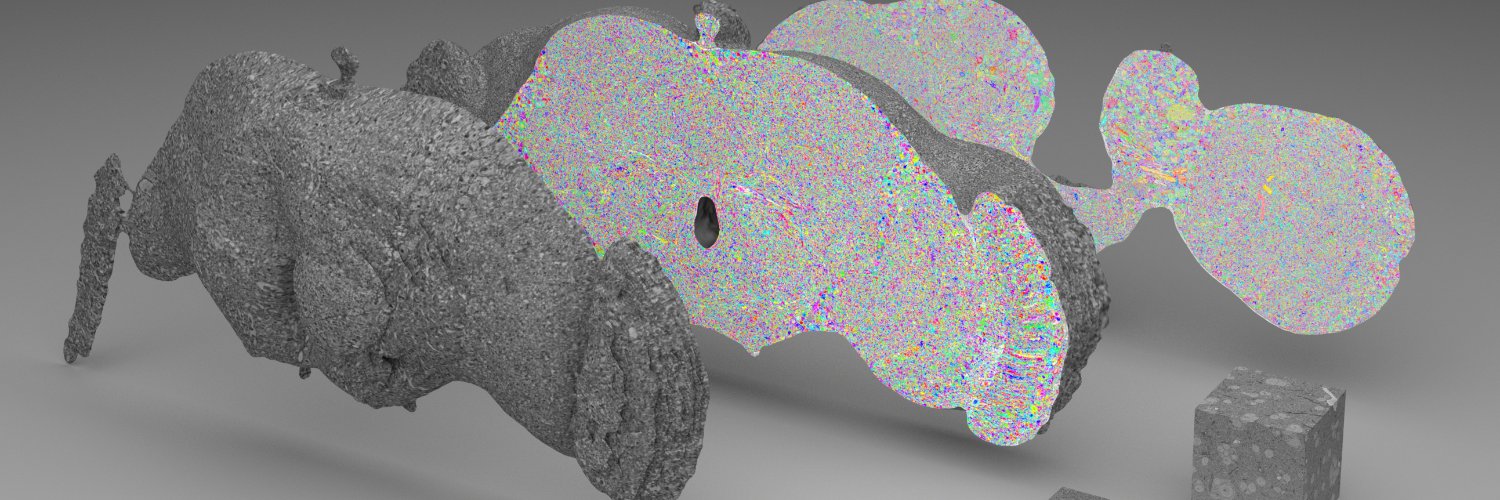
Viren Jain
@stardazed0
research scientist @ google. connectomics, machine learning, drumming, etc.
excited to talk to folks at berkeley about brains (and more) -- stop by if you're around tonight
per the event description: Viren Jain is a Senior Staff Research Scientist at Google in Mountain View, California, where he leads Google’s Connectomics team., responsible for tools like SegCLR and TensorStore. lu.ma/067stci3
@Google Neuroglancer has become a pillar of connectomics ecosystems. Learn more at this workshop!
Join us tomorrow for the Q&A 'Extending the Neuroglancer Paradigm: Advancing Collaboration on Large-Scale Imaging Data' 👉 Register here: events.zoom.us/e/view/UtTwLDv… 🗓️ Tuesday, July 29th | 12:30pm - 2:00pm ET
Incredible progress from @michalj on further automating connectomics, leading to order of magnitude reductions in error rates and estimated proofreading costs.
Wouldn't it be great if we could not only image large connectomic volumes, but also completely reconstruct them? And if a whole mouse brain project didn't cost billions? With the PATHFINDER preprint (biorxiv.org/content/10.110…), we preview a future where it doesn't have to.
Wouldn't it be great if we could not only image large connectomic volumes, but also completely reconstruct them? And if a whole mouse brain project didn't cost billions? With the PATHFINDER preprint (biorxiv.org/content/10.110…), we preview a future where it doesn't have to.
An important addition to the Nature paper, beyond what was shown in the 2024 preprint, is 12 rounds of iterative imaging and sectioning of a LICONN volume, achieving 205 microns in axial extent (native scale) with manual tracing of axons: nature.com/articles/s4158…
Nature research paper: Light-microscopy-based connectomic reconstruction of mammalian brain tissue go.nature.com/42MnD5S
Nature research paper: Light-microscopy-based connectomic reconstruction of mammalian brain tissue go.nature.com/42MnD5S
A fluorescence-microscopy method for tracing neuronal connections in the brain could make connectomics studies more widely accessible for neuroscientists go.nature.com/3GMsATv
This was another great paper to work on. EM has been the standard for connectomic research since forever, but is a pain if you want to want to label molecules or cells. This paper makes an important step towards using light microscopy for connectomics. nature.com/articles/s4158…
Today, in collaboration w/ colleagues at the Institute of Science and Technology Austria (ISTA), we report the first-ever method for using light microscopy to comprehensively map all the neurons & their connections in a block of mouse brain tissue. More →goo.gle/4maUNUs
late post, but heartfelt thanks to @stardazed0 for coming through for our second to last BioML @ Berkeley seminar for the semester! standing room only and back to back questions until we called it... I'm thinking we might need a bigger venue 🫥
Can we predict future brain activity in a small vertebrate? Stop by the Google booth at 12PM @iclr_conf, for the introduction of ZAPBench: a benchmark to forecast activity in a whole larval zebrafish brain with 70k+ neurons. openreview.net/forum?id=oCHsD…
Google Research, @Harvard and @HHMIJanelia have created the Zebrafish Activity Prediction Benchmark (ZAPBench), which can help researchers more accurately model brain activity in larval zebrafish — another step toward understanding more complex brains. goo.gle/42LMMME
In collaboration with HHMI Janelia & Harvard, we introduce ZAPBench, a whole-brain activity dataset and benchmark with single cell resolution of a larval zebrafish, which will enable development and comparison of more accurate brain activity models. →goo.gle/44rEpsn
Ilya Sutskever's Safe Superintelligence will be using Google's TPUs.
Beautiful paper. Scientists solved the structure of myosin—the protein that forms contractile filaments in muscle cells—in multiple configurations using Cryo-EM. They captured the entire power stroke action (where myosin pulls on actin to shorten the muscle) at4.4 Å resolution.
Amazing project, congrats all!
After 7 years, thrilled to finally share our #MICrONS functional connectomics results! We recorded activity from ~75K neurons in visual cortex in a single mouse, then mapped its wiring using electron microscopy. To systematically characterize neuron function, we built the first…
This was actually very impressive. An assignment in my class is to determine the price & TAM of a product that can give the calorie count of food using a new form of spectroscopy, with $75 COGS. The new Gemini 2.5 Deep Research got all of that & much more. It used to take hours.
All the evidence is that Gemini 2.5 Pro represents a new level of LLM that is much more capable than any released model, including other big reasoners. It got 24.4% on the Math Olympiad test that every other model bombed at, for example. I am very curious to see the system card.
After many requests, we’ve evaluated Grok 3 on the USAMO 2025. The results are in: Grok 3 is tied with DeepSeek-R1 for the second place, earning 4.76% of the total points!
love me a good pareto frontier...
With gemini 2.5 pro pricing and results, Google has fixed the biggest unknown/weakest link in their lineup and we can now confirm that @GoogleDeepMind completely owns the pareto frontier down to 1220 elo (at least until o4-mini and gpt5?)
🧵Wildfires are a growing threat globally — but existing tech just isn't very good at detecting and tracking them. Here's how we worked with @MuonSpace @EarthFireAll @MooreFound to launch FireSat, a constellation of satellites to spot fires when they're still small ⬇️